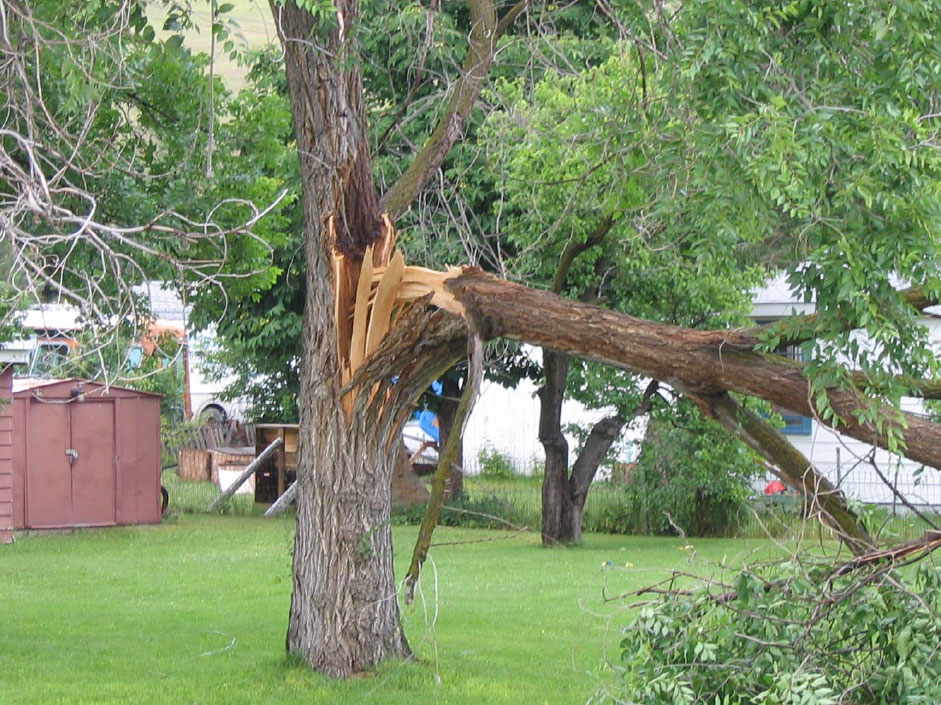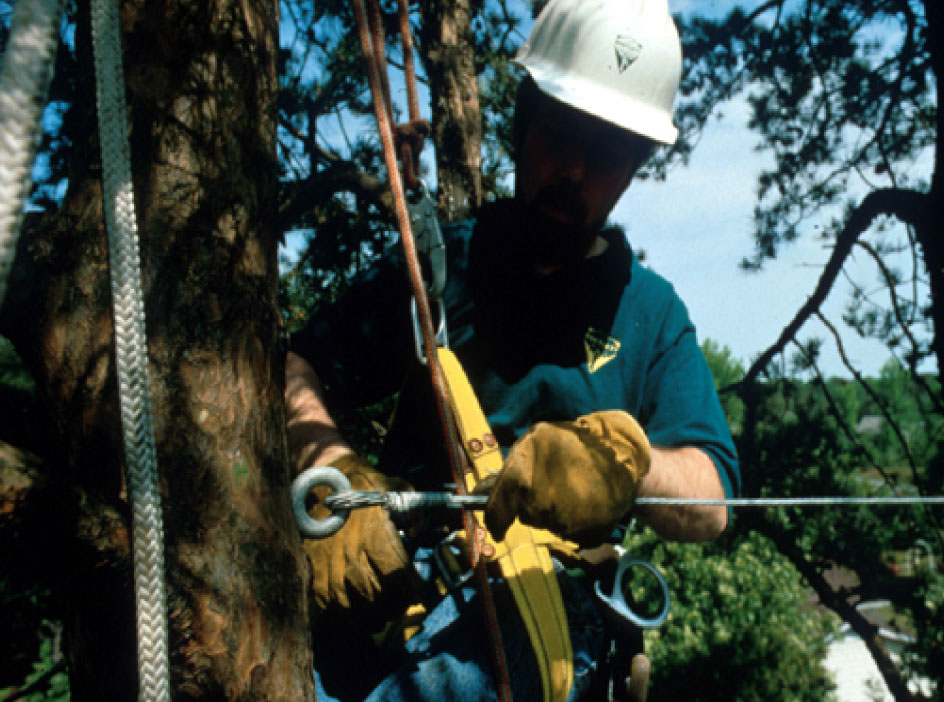Keep it Together: Cabling Weak Trees

Don’t let this happen to you. Weak trees need a little structural support. Photo: Purdue University
One of the ways Mother Nature keeps the forests healthy and strong is by “letting” trees with poor structure split during high wind or ice load events. Such trees become decayed and die young. Those with better genetics (or better luck, sometimes) are the trees that reach maturity. This selection process is great for woodlands, but it doesn’t work quite the same way for trees growing in our yards, streets, and parks.
Trees in our landscape have already been selected by people, and in general, we have reasons to plant them (trees, that is) in a given location. It takes much effort, expense, and time to produce mature shade trees, and we would like to keep them around as long as possible.
No tree is perfect. Sure, saplings probably grow up leafing through Cosmopolitree magazine, hoping to look like their “Arbie” dolls someday, but often they develop imperfections. The vast majority of these are benign, but some can be dangerous. To large broken limbs and associated flying lawsuits and debris, trees with obvious defects are often removed. But since many problems are a result of our activities, it hardly seems fair to send a mature shade tree to that great arboretum in the sky if there’s an alternative.
A common but usually correctable problem is called narrow forks. Somewhere there must be a lovely small town of that name, but we want to avoid narrow forks as it relates to trees. These occur where the angle of attachment between trunk and limb, or between two competing (codominant) trunks is very, you know, narrow. The strongest attachments are open, somewhat “U”-shaped, with a wide angle approaching ninety degrees. Narrow forks, or unions, get weaker with age, until eventually a large tear occurs. I saw a lot of major splits in trees in the 1998 ice storm that were a result of narrow forks.
This type of defect can be fixed when the union is small by a mere snip of a hand pruner. If this is not done, the defect gets weaker over time. If there is a valuable target (swing set, house, Faberge egg) that could be struck if one side splits off, corrective action is needed. Have a professional evaluate the tree. If it is in very bad shape, it may need to go, but if is healthy other than the weak union, a cable system could be installed.

But cabling trees is complex and may not be a DIY activity. The solution may require a certified arborist. Photo: Purdue University
My hat is off to all the capable DIY-ers out there, but leave your ladder, baling wire collection, and rusty turnbuckles where they are. I’m not digging for jobs here because I no longer work as an arborist, but really, you need to hire a professional to install a cable system. Cabling must be done right or the problem could be made worse. And there is a right way to do it. The American National Standards Institute (ANSI), which has specs for home wiring, water lines, and steel bridges, also has standards for tree cabling. Cable diameter, type of eye, size, and type of bolts to use are all specified.
It’s critical that the cable is installed at the right height. It should be placed two-thirds to three-quarters of the way from the weak fork to the top of the tree. Of course, the cable is not wrapped around the trunk, since that would damage the trunk and weaken or kill the tree above that point. Either drop-forged eye bolts or J-shaped lag screws are used to secure the cable ends to the tree. The correct sized hole is drilled through the tree (for bolts) or into the tree (for lags). Bolts are stronger, and are used for larger wood and for any case where decay inside the trunk is suspected. Lags are cheaper and easier to install but are acceptable only for small wood where there is no evidence of decay.
Cabling may be used occasionally in other ways, for example a whole tree with a trunk defect may be cabled to other trees to support it. Some cables today are synthetic material, rather than steel, to allow for more natural limb movement.
Lest you think your tree will look like a Frankentree, don’t worry. A proper cable system is inconspicuous, even to the point where you may have to squint through binoculars to be sure it was actually installed. For a fraction of the cost of a removal, and a tiny fraction of the cost of emergency removal plus damage repair, most trees can get an extended lease on life with cabling.
Although under extreme conditions even a perfect system may fail, I’ve never seen a properly installed cable system fail. I have, on the other hand, seen many homemade or substandard ones break, rip out of the wood, or otherwise fail.
For information on cabling contact your local Certified Arborist or other tree care professional. Start with companies that belong to trade organizations like the International Society of Arboriculture (ISA) or the Tree Care Industry of America (TCIA). Ask them to show you their copy of the ANSI cabling standards and insist on proof of insurance directly from their carrier. May you and your trees keep it together to a ripe old age.
Paul Hetzler is a horticulture and natural resources educator with Cornell Cooperative Extension of St. Lawrence County.






